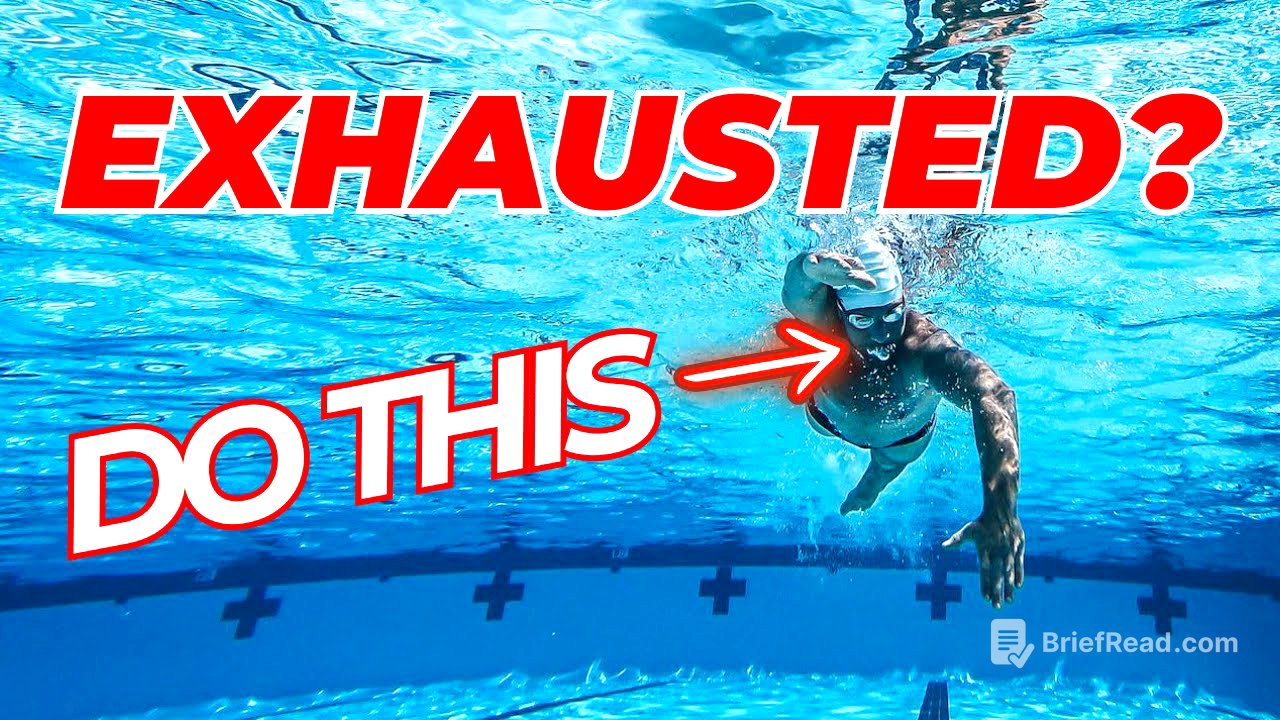TLDR;
This video addresses a common challenge faced by triathletes transitioning from running or cycling to swimming: feeling excessively out of breath. It explains that this sensation often stems from improper breathing technique, specifically holding breath underwater, which leads to carbon dioxide buildup. The video emphasizes the importance of continuous exhalation while the face is submerged to manage CO2 levels and improve swimming endurance.
- Improper breathing leads to carbon dioxide buildup.
- Continuous exhalation while the face is submerged is crucial.
- Correcting breathing technique can significantly improve swimming endurance.
Introduction: The Breathing Challenge for Fit Athletes [0:00]
Many athletes who are very fit in running or cycling struggle with swimming because they quickly become out of breath. This is often surprising, as they may be aerobically fitter than other swimmers who appear more relaxed and can swim longer distances. The key issue is often not fitness but improper breathing technique.
The Problem: Holding Breath and CO2 Buildup [0:27]
The primary problem is that these athletes tend to hold their breath underwater. Unlike running or cycling where you can breathe freely, swimming requires exhaling into the water. Holding breath leads to a buildup of carbon dioxide in the blood, which triggers the sensation of needing to breathe. This feeling is often mistaken for a lack of oxygen, but it's the excess CO2 that drives the urge to breathe.
Demonstration: Incorrect Breathing Technique [2:29]
The video shows an example of an athlete holding their breath for multiple strokes before exhaling. There are no bubbles coming out of the nose or mouth while the face is in the water, indicating breath-holding. This causes carbon dioxide to build up, leading to discomfort and the feeling of being out of breath, even for fit individuals.
Demonstration: Correct Breathing Technique [3:34]
The video contrasts the incorrect technique with a swimmer who exhales continuously into the water. A constant stream of bubbles comes from the nose and mouth while the face is submerged. This prevents excessive carbon dioxide buildup, allowing the athlete to breathe appropriately relative to the intensity of the exercise.
The Solution: Continuous Exhalation for Improved Endurance [4:35]
By focusing on exhaling fully into the water, athletes can transform their swimming experience. Those who previously could only swim short distances can significantly increase their endurance. The key is to avoid holding breath and ensure continuous exhalation to manage carbon dioxide levels effectively.
Final Thoughts and Takeaways [5:37]
The video concludes by reinforcing the importance of proper breathing technique in swimming. By watching and internalizing the example of a swimmer who exhales fully underwater, viewers can improve their own swimming. The presenter guarantees that focusing on exhaling into the water will increase the amount of time one can swim without feeling the need to stop.
Offers and Services [6:33]
The presenter promotes Precision Fuel and Hydration, offering a 15% discount with the code "oxygen24". They also mention a free Fuel and Hydration planning tool and one-to-one video consultations. Additionally, they promote Team Oxygenaddict's Triathlon coaching program, inviting viewers to book a call for personalized advice.









